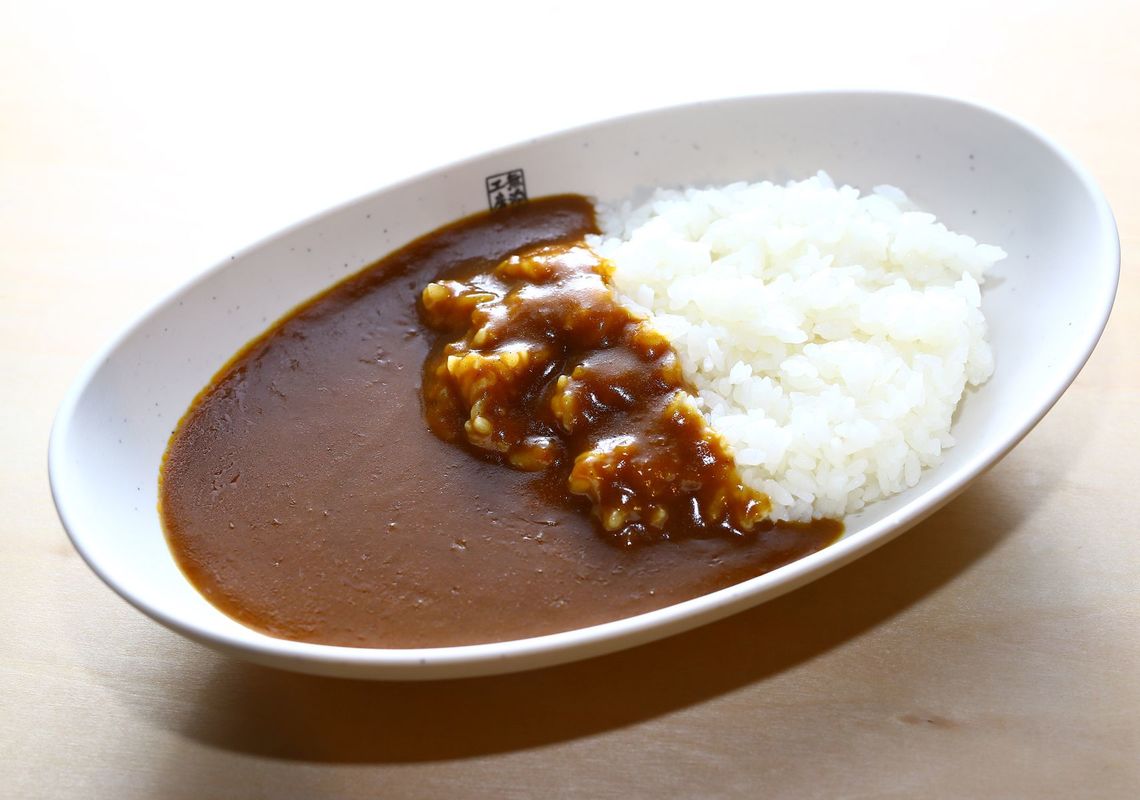
Curry has become one of everyone’s favorite dishes in Japan that it can now be considered a national food.
To be exact, it’s not just curry. It’s “curry rice” that is widely loved by the Japanese, which is a combination of the curry sauce widely referred to as the “roux” containing plenty of boiled vegetables like potatoes and carrots, and the white steamed rice that has long been the staple diet in this country that no native can literally go without.
Recently, an out-of-box version of curry appeared on the scene and is drawing a lot of curious eyes, especially because it was introduced by a sushi chain. From the end of July, Kura Sushi, a major conveyor belt sushi restaurant chain run by Kura Corporation began serving a new dish named “Shari Curry” in 360 outlets nationwide.
Shari is a jargon used among the sushi chefs that means vinegared rice used as the base of all sushi repertoires. The curry roux that comes together with this shari in Kura Sushi features a blend of 26 different spices and 13 types of vegetables and fruits, including onions and apples.
The product developers in Kura decided to offer this brand new item at 350 yen per plate and are aiming at receiving a total of 1 million orders in the first three months.
“We made it taste as good as any curry served in specialty curry shops,” boasts Kunihiko Tanaka, president of Kura. “We must keep on developing new items of high quality like this one.”
10 years of development
Shari Curry may easily be taken as one of surprise moves contrived by the sushi chain as a quick-win solution to generate instant publicity. But that isn’t true. Kura was dead serious about taking this step forward, and contemplating over its solution for quite some time. “We actually kicked off this project 10 years ago,” revealed Tanaka.
In the initial phase, the developers tried to create the roux from fish soup stock, but gave up this idea because “it lacked in impact,” they say.
Next, they turned their attention to western-styled curry roux that added a pinch of strong sour taste, including vinegar, as hidden flavor. The discovery that the taste of curry could be enhanced by adding a touch of sourness opened their eyes and flashed in their minds the idea of using shari instead of plain white rice to create their original version of curry rice.
Although the basic direction had been set, “it was just a beginning of a long, long journey,” recalls Yoshitake Matsushita, the head of the corporation’s product development department. “We tried tasting every single retort curry we could find in supermarkets."
His team created more than 100 variations to find which roux fits the best with their shari. This quest for the perfect match had to be carried out meticulously to check every small details of the cooking process from the balance of mixed ingredients to the methods of stir frying the vegetables and stewing them in the base soup. They had to be extra careful to prevent even a slightest change in any of these preparations that could easily end up causing a big difference in taste later on.

Through these diligent efforts of repeated trials and errors, numerous prototypes were developed and forwarded to the top management for tasting. But unfortunately, each of these painstaking works had not been able to gain the long-cherished final nod from the president.
“Even when other executives all said 'It’s good!' I just couldn’t agree to their evaluation," says Tanaka. "There were so many instances like that. I must have said 'No good' to 10 or more prototypes."
It was only at the end of last year that the development team was at last able to please their boss and receive his thumbs-up to the one and only prototype officially authorized to circulate the in-store conveyor belt as the new sushi plate called Shari Curry, which features the rich taste of curry with a spicy edge, followed by the sweet and sour flavor of shari spreading in your mouth that altogether leaves an impressively refreshing aftertaste.
Kura has recently announced that the customers are ordering this unique new plate “1.5 times more than the initial target set in our sales plan” since its debut last month.
Wooing younger constomers
The reason why they have put so much passion in new product development can be explained primarily by the harsh business environment surrounding the domestic food service industry at large.
Although conveyor belt sushi is continuing to expand its market size steadily on the overall, the competition among the major players in this sector is growing increasingly intense.
For instance, the leading player, Akindo Sushiro, is investing heavily on upgrading the children’s menu and has so far introduced “Crepe Sushi” and “Sushi Omelet” that both use thinly layered egg to wrap around deep-water shrimp and other main ingredients.
Hama Sushi, a subsidiary of Zensho Holdings, is currently in the process of opening more than 50 outlets in one year, and has already surpassed Kura Corporation and seized its number two position in the sushi market in terms of the total number of chain restaurants.
Meanwhile, Kura has actually been enjoying a very good performance in business since 2012 when the company began adding non-sushi items to its menu, including “Nanashu no Gyokai Shoyu Ramen” that features a blend of seven different fish soup stocks in a soy-sauce based soup noodles.
Despite of such favorable trend, Tanaka is still strongly conscious of the high risk that may adversely affect his company anytime, and warns that “conveyor belt sushi chains that cannot respond to the consumer needs will eventually fade away.”
Kura’s decision to launch Shari Curry reflects its top-priority business strategy that can be largely divided into two main objectives, of which one is expanding the customer base. Thanks to the momentum gained from increasing non-sushi items in the menu by including coffee and desserts in addition to the aforesaid ramen, the average customer spend in the existing Kura Sushi restaurants has increased consecutively for 31 months on a year-to-year basis until this June.
Yet, the number of customers visiting these restaurants per month has declined time after time, including this June that went down to 93.5% of the same month a year ago. As evident from this figure, one of the biggest challenges faced by Kura is to put a halt to this downward trend and somehow return to its quantitative growth path that leads to steady increase of visitors.
Currently, the main group of customers visiting Kura Sushi is formed by consumers in their 30s and 40s who bring along their family. By introducing curry that is popular among a wide range of age groups, Kura hopes to reach out to the senior generations, salaried employees in the 20s and other demographic portions that the chain had been relatively weak in receiving strong support.
The second key objective behind this launch has been to improve the cost percentage. The average cost to sales ratio of a conveyor belst sushi chain is in the 40% range, and is comparatively higher than the industrial average (approximately 30%).
The weakening of yen in the past few years has also been a hard blow to Kura that relies around 70% of its raw materials on imported seafood. But compared to seafood with rigorous requirements on freshness that lead to higher running costs, the ingredients used for Shari Curry can be procured more economically and can therefore help raise the cost percentage.
Furthermore, since many of the curry ingredients are home-grown and do not have to be imported, the company can curb the cost impact arising from exchange rate fluctuations.
What would the company’s next step be after breaking new ground in sushi business with curry? The product developers and strategic planners of its competitors are, without question, paying close attention to Kura’s well-calculated next move.
